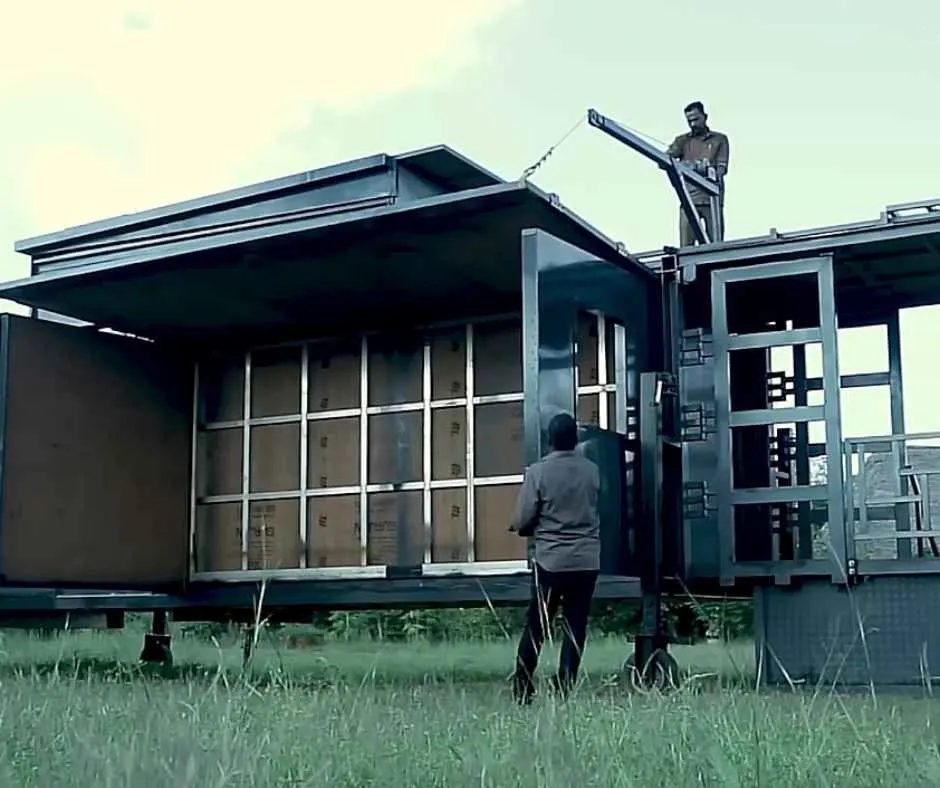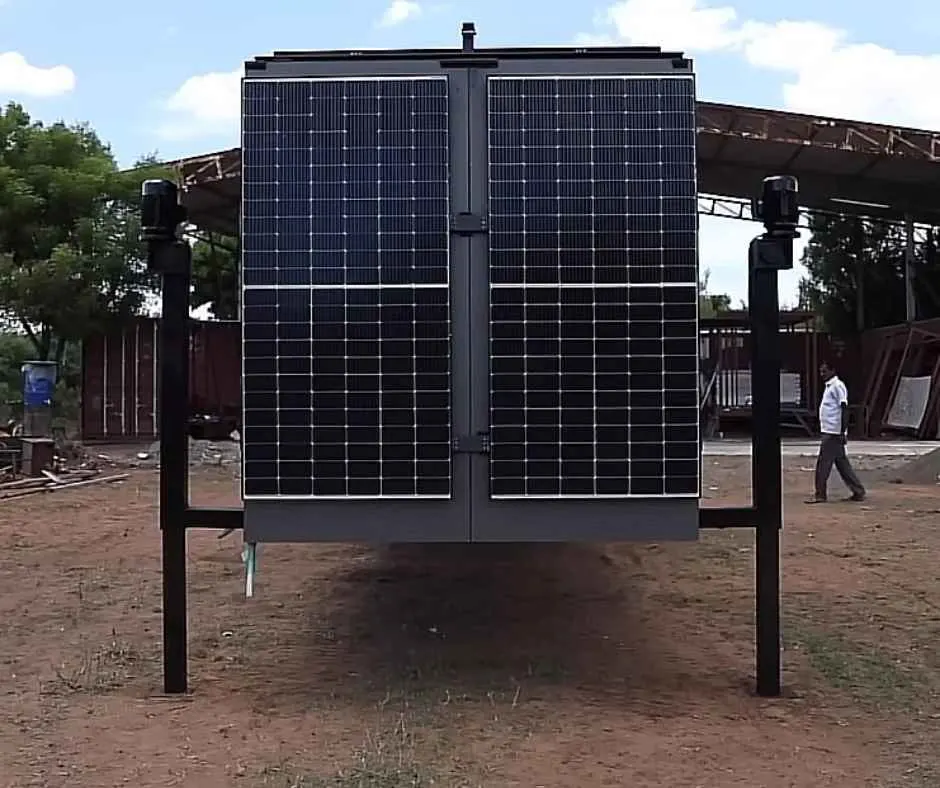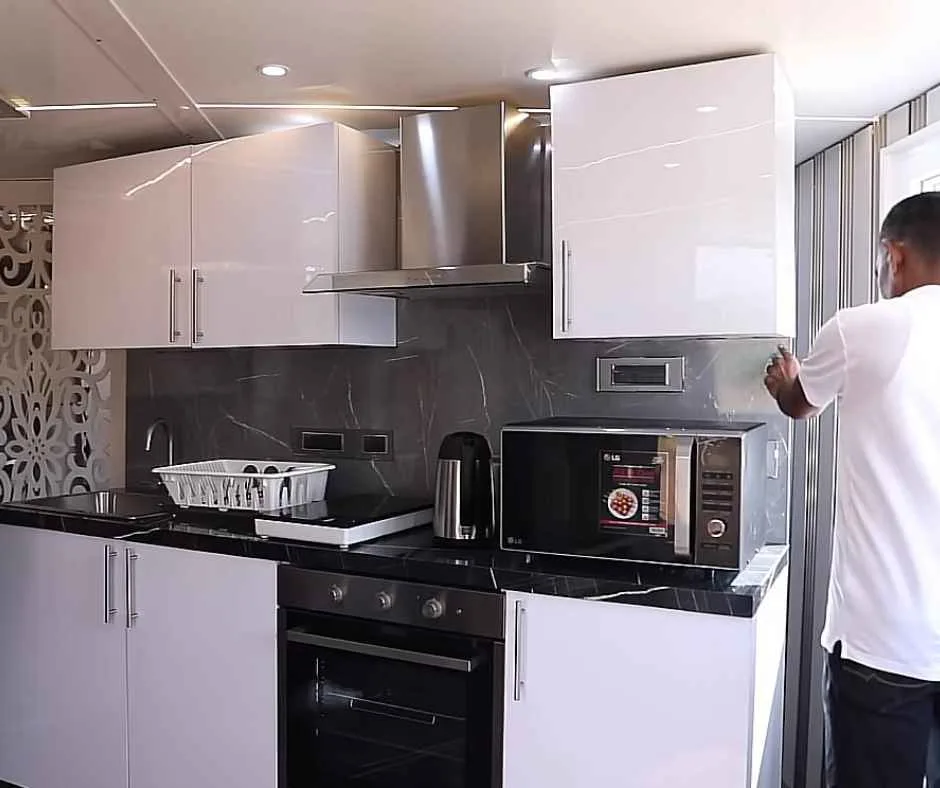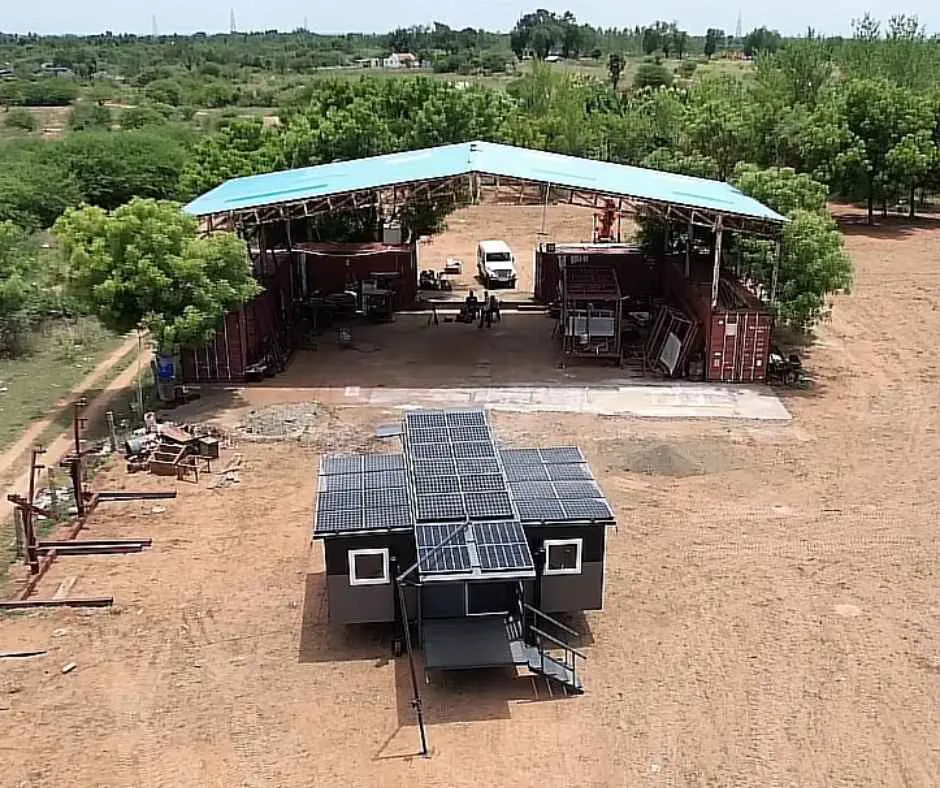Imagine dreaming of an expandable container home that can travel with you, unfolding into a comfortable living space quickly, and equipped with all the essentials.
That’s exactly what Kamal Kadhar dreamed of ten years ago, inspired by innovative designs he discovered online.
Despite lacking formal construction training, Kamal started a journey fueled by determination and passion.
Using his earnings from eight years of driving for Uber, Kamal built a compact yet expandable container home measuring 7.5 feet by 24 feet.

The beauty of his creation lies in its portability – it can be towed by a 4×4 vehicle, eliminating the need for cranes or forklifts.
Kamal’s journey began in a field outside Tiruchirappalli, a southern Indian city, where he constructed his first prototype.
What sets Kamal’s creation apart is its simplicity and resilience. He opted for mechanical winches instead of complex hydraulics to ensure ease of deployment in remote locations.
As Kamal describes it, the expandable container home is like an octopus – small when needed, expandable when necessary, and can withstand disasters like fires, hurricanes, or floods.

The relocation process is as easy as moving a shipping container, making it legally transportable anywhere in the world using a 4×4 SUV.
The journey wasn’t without its challenges.
After investing almost a decade of hard work and facing financial strain, Kamal’s family was on the verge of giving up.
However, witnessing the prototype changed everything. Realizing the idea’s value brought relief despite the personal and financial sacrifices.
Kamal’s unconventional path involved learning everything from YouTube, combining his experiences as an Uber driver with visits to construction sites and apprenticeships at a builder’s shop.
The relocation process is as easy as moving a shipping container, making it legally transportable anywhere in the world using a 4×4 SUV.
The journey wasn’t without its challenges.
After investing almost a decade of hard work and facing financial strain, Kamal’s family was on the verge of giving up.
However, witnessing the prototype changed everything. Realizing the idea’s value brought relief despite the personal and financial sacrifices.
Kamal’s unconventional path involved learning everything from YouTube, combining his experiences as an Uber driver with visits to construction sites and apprenticeships at a builder’s shop.
His creative mindset was founded on his father’s small scrap metal shop, where he played with metal and aluminum, shaping the project to resemble a regular shipping container.
The main structure starts small at 7ft 6in and expands to 20ft.

The expandable container home takes less than 2 hours to build, with a foundation not required.
It can be adjusted on uneven surfaces using built-in leg jacks.
The roof opens with stainless steel hinges, both mechanical and electrical components, avoiding hydraulics for reliability.
The roof opens to add solar panels, maximizing power generation for personal use or resale to the government by connecting to the grid.
The sides expand mechanically, controlled by a hinge, making it easy to pull and open with just one finger.

The kitchen, also expandable, is attached to the bathroom facility. Utilities run down the middle, and it’s designed to hook up to city sewage.
The living area is spacious, with a total interior size of 300 square feet, and the bedroom features a foldable bed.
This house has been tested in a remote village, and even non-professionals helped build it confidently.
You can expand it and adjust the interior to make it more spacious.

A Murphy bed is integrated into one of the walls, along with a fixed toilet and shower, according to Fair Companies.
The house can be unfolded and ready to use within an hour, with the kitchen in place in a minute.
Unfortunately, Kamal’s father passed away, but he believes he would be proud of his accomplishments.
Meanwhile, Kamal likes to take the Octopouse into production and is committed to assisting initial buyers in leading less stressful lives.

While contemplating a selling price of over $50,000, he refrains from delving into specific details that could significantly influence this estimate.
As a concept, the Octopouse, an expandable container home, emerges as an ideal home: highly mobile, offering ample space with a compact footprint during travel, capable of generating its own power, and shipping fully furnished and move-in ready.
Tour Kamal’s expandable container home by watching the video below courtesy of Kirsten Dirksen:
